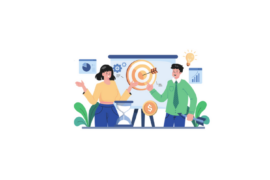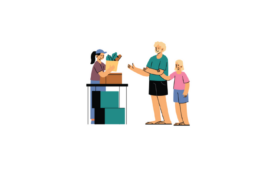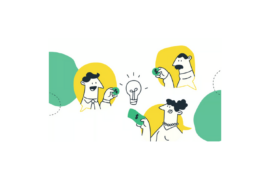While digital tools have increasingly aided nonprofit fundraising, traditional methods still hold value. Donation tracking software serves as one pivotal innovation, streamlining the recording and analysis of contributions. Yet nonprofits must balance standardized systems with personalized touches shown to retain donor loyalty.
This specialized software centralizes donation documentation and processing into an organized platform. Real-time tracking, customizable reports, and donor profiles bring structure. Still, successful fundraising demands flexibility to engage individuals beyond financial exchanges. Sustained support stems from meaningfully addressing donors as people rather than accounts.
For nonprofits, efficient fundraising underscores impactful missions. Funds raised determine a group’s outreach scale and program longevity. Whether supporting underserved communities or advocating crucial causes, consistent funding connects purpose to progress.
In Canada’s diverse nonprofit sector, effective resource management carries weight. Myriad organizations address pressing social issues, relying on donations rather than charging for services. Strategic fundraising safeguards current aid and envisions expanded futures. However, optimal results stem not only from optimized systems but authentic connections inspiring repeated investment in causes.
The Landscape of Fundraising in Canada
Canada boasts a vibrant and diverse nonprofit sector that contributes greatly to the fabric of society. This wide array of organizations, ranging from charities and foundations to advocacy groups and community services, plays an indispensable role in tackling social issues and bolstering citizen well-being. Nonprofits in Canada dedicate themselves to innumerable causes, including healthcare, education, environmental protection, social justice, and more.
As of 2024, thousands of registered nonprofit entities operate nationwide, each with its own unique mission and goals. A robust legal and regulatory framework underpins the sector, ensuring fundraising and business practices are transparent, accountable, and principled. However, fundraising challenges endure that can hamper an organization’s ability to sustain initiatives through consistent funding acquisition.
Amplified Competition: The nonprofit landscape in Canada is exceedingly competitive, as groups vie for donor attention and support. Gaining distinction and securing reliable funding can prove difficult amid this competition. Economic Flux: Economic fluctuations and uncertainties can impact potential donors’ discretionary income, resulting in fundraising outcome variances. Nonprofits may struggle during downturns when benefactors have constrained resources to dedicate to charitable giving. Evolving Demographics: Shifting demographics like an aging populace and changing donor preferences present challenges for nonprofits to effectively engage different demographic segments through tailored fundraising strategies. Regulatory Adherence: Compliance with evolving regulations and standards demands ongoing efforts and expenditures. Navigating these compliance requirements adds complexity to the nonprofit fundraising process.
In response to fundraising challenges encountered by Canadian nonprofits, there is a growing understanding of technological solutions’ necessity to enhance efficiency, transparency, and outreach. Donation Tracking Software emerges as a critical ally in addressing these challenges through technology, especially.
Understanding Donation Tracking Software
Automated fund raising systems have revolutionized how non profit groups gather and manage donations. At its core, this technology serves as a comprehensive platform to computerize tracking, documenting, and scrutinizing financial contributions from benefactors. It goes beyond antiquated manual techniques, furnishing a centralized and efficient scheme for handling donations.
The principal role of automated fund raising systems involves the methodical logging of contribution dealings, donor particulars, and related facts. This electronic tool permits non profits to keep an organized database of gifts, supplying live updates and insights into their fund raising advancement. By mechanizing these processes, associations can significantly decrease the administrative burden related to traditional fund raising methods, allowing them to focus more on their mission.
Key Features and Abilities
Automated fund raising systems come outfitted with an assortment of key features and abilities that empower non profits to streamline their fund raising attempts and enhance overall productivity. Some of the essential features include:
Benefactor Management: Proficiently track and manage benefactor information, like contact particulars, gift history, and communication choices.
Transaction Tracking: Document and monitor all financial dealings, including one time and reoccurring donations, grants, and donations in kind.
Reporting and Analytics: Generate customizable reports and gain insights into fund raising execution, benefactor trends, and campaign effectiveness to advise strategic decisions.
Automation: Automate repetitious tasks, such as donation acknowledgement emails, receipts, and campaign updates, saving time and ensuring timely communication with benefactors.
Integration: Seamlessly integrate with other tools and platforms, such as CRM systems and payment gateways, to create a cohesive and interconnected fund raising ecosystem.
Security and Compliance: Ensure the security of benefactor data and compliance with relevant fund raising regulations, fostering trust and confidence among supporters.
Types of Automated Fund Raising Systems on the Market
The market offers a diversity of Automated Fund Raising Systems solutions, each catering to the diverse needs of non profit organizations. The types of software can be categorized based on their deployment, functionality, and scalability. Common types include:
Cloud Based Solutions: Offered as a service, these solutions furnish accessibility from any place with an internet connection, facilitating remote collaboration and data management.
On Premise Software: Installed straight on an organization’s servers, on premise solutions give non profits complete control over their data and infrastructure.
Integrated Fund Raising Platforms: These platforms combine donation tracking with other fund raising tools, such as event management, peer to peer fund raising, and campaign tracking, creating an all encompassing solution.
Open Source Software: Non profits with specific customization needs may opt for open source solutions that allow them to modify the software’s source code to suit their requirements.
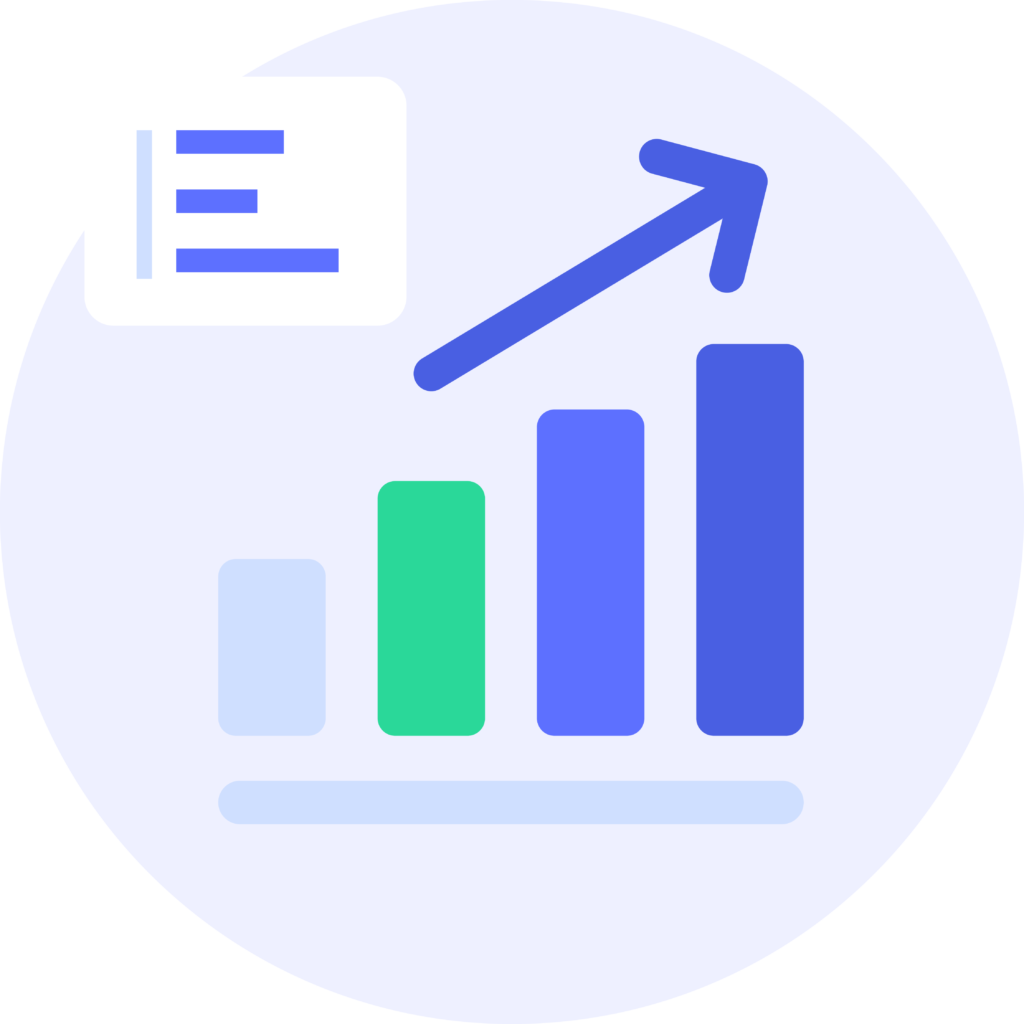
Benefits of Donation Tracking Software for Fundraising
Donation tracking systems streamline fundraising for nonprofits in numerous consequential ways. Manual donation documentation and donor information management can expend too much time and too many resources, prone as such processes are to human errors. Automated donation tracking eliminates these inefficiencies, allowing streamlined data submission, handling, and administration. Not only does this reduce the clerical work demanding nonprofit staff attention, it frees up hours for pursuits like cultivating donor relations, developing programs, and broadening reach.
Transparency and responsibility are paramount in this sector, and how contributions are dealt with especially warrants clarity. Donation tracking centralizes and makes accessible all donation transactions, enabling easy donor access to see how their donations were applied and keeping channels open between organization and supporters. The built-in audit trail also demonstrates fiscal responsibility and adherence to standards.
Gaining and preserving donor trust is fundamental to long-term nonprofit prospects. Donation tracking plays a key role by ensuring donations are accurately and transparently managed. Donors appreciate visibility into funding usage and streamlined communication aids like automatic thank you’s and updates enhances their experience. Deepened trust likely increases donations and commitment over time.
Real-time reporting and analytics empower timely, informed choices. Donation tracking delivers actionable insight into fundraising performance by tracking trends, campaign success, and places for improvement. This data-driven approach allows adaptation to maximize fundraising based on up-to-date information, whether measuring a campaign’s impact or identifying the most effective donor acquisition avenues.
Exploring donation tracking’s many perks shows it does more than record keeping. It forms an integral part of a modern, effective fundraising strategy, enabling Canadian nonprofits to maximize impact and accomplish missions with greater potency.
Choosing the Right Donation Tracking Software
Selecting the optimal donation tracking program is a pivotal decision that can dramatically impact the success of a nonprofit’s fundraising initiatives. Canadian charities must evaluate numerous factors to guarantee they opt for a remedy that aligns with their particular demands and goals:
Flexibility: Evaluate whether the software can extend alongside the organization’s growth. A versatile and scalable solution can adapt to escalating donation volumes and evolving organizational prerequisites. Occasionally, a program with restricted extensibility may struggle to sustain an agency’s progress. Yet there are usually workarounds such as integrating complementary tools or consulting implementation specialists.
Cost and Funds: Consider the complete expense of executing and maintaining the software, like any subscription charges, customization expenses, and training costs. Ensure the chosen alternative matches the corporation’s budgetary limitations. It is wise to explore no-cost open-source options along with low-cost proprietary programs to compare capabilities and value. Some suppliers offer reduced rates or free trials for qualified organizations.
User-Friendliness: Confirm that the software is convenient to employ and can be effortlessly embraced by team members with varying levels of technological experience. Intuitive interfaces and extensive instruction assets facilitate a smoother deployment approach. However, even user-friendly programs demand supportive guidance, especially for non-tech-savvy employees.
Integration Potential: Inspect the software’s compatibility with existing platforms, for instance CRM systems, payment gateways, and other fundraising instruments. Seamless incorporation enhances information flow and decreases manual information entrance. Third-party integration providers can bridge breaks between incompatible systems.
Security and Adherence: Prioritize the protection of benefactor specifics and make certain the software program follows applicable records security laws. This really is essential for maintaining have confidence in with benefactors and assembly legal duties. Nevertheless, no electronic system can completely eliminate all risks, so organizations must implement compensating controls.
Customization Alternatives: Assess the extent of customization the software program presents. Nonprofits may have unique reporting requires, and a adaptable solution enables corporations to tailor the software to their precise wants. On the flip side, substantial tailoring can expand implementation time and cost. Standardization often yields benefits of simplicity and efficiency.
Assessment of Premier Software program Solutions
Donation tracking software offers a multitude of options, so conducting diligent comparisons is prudent. Consider factors like:
Feature sets – contrast features like donor management, transaction logging, reporting, and automation. Some excel in specific areas like customized forms while others integrate seamlessly.
User reviews – research testimonials to gain real-world perspectives on usability, support responsiveness, and gratification. Hearing diverse nonprofit journeys provides valuable viewpoints.
Vendor repute – evaluate experience and reliability. Industry stalwarts more consistently foster nonprofit achievement through stable support. However, innovators occasionally introduce groundbreaking capabilities.
Support standards – assess assistance quality. Adequate guidance eases implementation and usage hurdles. However, tutorial quality varies, so probe training formats.
To optimize benefits, plan implementation meticulously. Consider:
Thorough prep – dedicate time instructing staff thoroughly to reduce the learning curve and minimize mistakes. Observe demonstrations to cement comprehension.
Data transfer strategy – devise a clear process to port existing donor details accurately. Continuity hinges on smooth transitioning without discrepancies.
Stakeholder correspondence – communicate schedules transparently to all relevant groups like employees, donors, and leadership. Explain rationales to preempt concerns and bolster aid.
Testing iterations – rigorously assess functionality before full deployment. Address issues during trials to facilitate a seamless launch.
Constant evaluation – regularly solicit feedback and analyze performance. Make timely customizations as needs evolve. Ongoing tuning maximizes value.
Overcoming Challenges and Concerns
Privacy and data security are crucial considerations when implementing a donation management platform for Canadian nonprofit organizations entrusted with patrons’ sensitive financial information. To address these vital concerns:
All transmitted and stored donor details must be thoroughly encrypted through robust methods upheld by software compliant with data privacy regulations, safeguarding contributors’ confidential details. Strictly define personnel permissions and digital access controls relative to job roles, mitigating unauthorized access risks by restricting exposure to sensitive material. Conduct regular audits to proactively identify vulnerabilities, assiduously applying all recommended upgrades and patches to maintain defenses against emerging threats. Clearly communicate transparent information handling policies to establish trust that patrons’ particulars are discreetly managed with utmost care.
Proper staff training is imperative for a donation management platform’s successful adoption. Adopt strategic training and implementation approaches:
Provide comprehensive programs covering all aspects of the platform, tailoring sessions by role to focus on practical scenarios. Maintain approachable help resources such as documentation, tutorials and dedicated assistance to encourage navigation through challenges. Initiate small pilot programs allowing feedback incorporation and adjustment before organization-wide deployment. Continuously cultivate skills through workshops and webinars to stay apprised of new features or updates.
Budget limitations present challenges for cash-strapped nonprofits pursuing donation management platforms. To overcome such restraints:
Research cost-effective options aligning with budgets while retaining functionality. Prioritize immediately critical features, deferring extras. explore grant opportunities or partnerships providing financial support for upgrading tech infrastructure. Pool resources through community collaboration to jointly invest in shared tools overcoming individual budget obstacles.
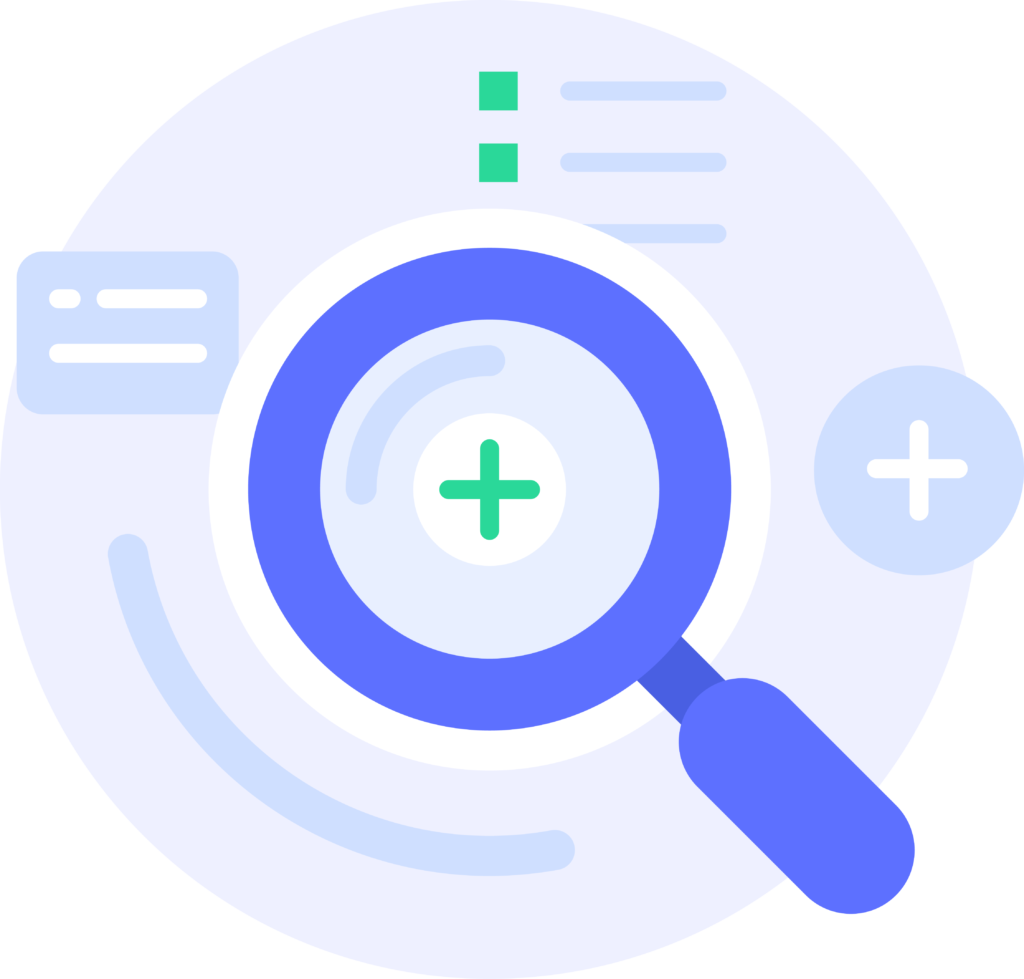
Future Trends in Fundraising Technology
The changing landscape of fundraising technologies is continually propelled by innovative solutions aimed at enhancing effectiveness and proficiency. At the vanguard of these advances, Donation Tracking Software and emerging technologies are sculpting fundraising’s future:
Blockchain’s adoption grows for its transparency and protection abilities in funding transactions. Leveraging blockchain allows donation records systems an immutable, verifiable ledger, ensuring gift details integrity.
The rise of mobile and contactless payments influences how benefactors contribute. Donation Tracking Software integrating payment technologies seamlessly permits more practical, immediate donations catering to modern benefactors tendencies.
Internet of Things devices potentially revolutionize collection monitoring. Smart appliances could document real-time information on collection station, event attendance and projects impacts data, providing comprehensive fundraising activity views.
Artificial intelligence and automation are integral Donation Tracking Software parts, revolutionizing how nonprofits leverage and administer benefactor data:
Predictive analytics may assist nonprofits anticipate benefactor behaviors, enabling personalized involvement strategies. Analyzing history assists predicting potential benefactors, recognizing tendencies and campaign optimization for maximum effect.
AI-powered chatbots could enhance benefactor interactions and help. These chatbots could handle inquiries, provide donation details and aid personalized communication, ensuring timely, applicable responses.
Automation tools within Donation Tracking Software may campaign optimization by examining performance metrics and adjusting strategies instantly. This ensures campaigns remain impactful and reactive to changing benefactor behaviors.
To stay pertinent and impactful, nonprofits must adapt to evolving fundraising needs. This involves a strategic technology adoption approach and an evolving landscape comprehension:
Fundraising’s future likely offers various channel integration seamlessness within Donation Tracking Software, providing holistic benefactor interaction and tendency views.
Personalization and benefactor journeys emphasize future fundraising technology, potentially facilitating custom benefactor experiences. Donation Tracking Software could evolve creating individual benefactor journeys tailoring communication and involvement according to benefactor histories and preferences.
Data security importance will continue growing as technology evolves. Future Donation Tracking Software possibly incorporates advanced encryption, authentication and proactive measures against emerging cybersecurity risks, protecting benefactor information.
Conclusion
Donation Tracking Software has propelled nonprofit fundraising forward since its inception. Throughout our discussion, we’ve underlined the pivotal role this innovation plays in amplifying philanthropic drives. From streamlining efficiencies and saving precious time to cultivating openness, responsibility, and bolstered donor assurance, Donation Tracking Software acts as a catalyst for positive change across the nonprofit sector. Its real-time reporting and metrics give organizations the insights to take strategic action, adjust to donors’ evolving priorities, and maximize their overall community effects.
Ready to elevate your fundraising and embrace an era of transparency and efficiency? Look no further than Werbylo, a cutting-edge digital fundraising platform designed especially for nonprofits.
Experience Werbylo’s Capabilities:
Effortless Giving: Streamline fundraising activities through Werbylo’s intuitive functions that automate donation tracking, saving you time and assets.
Openness and Trust: Build trust with contributors by capitalizing on Werbylo’s robust transparency tools. Highlight how gifts tangibly further your mission.
Insights in Real-Time: Gain an edge with up-to-the-minute reporting and metrics. Make evidence-driven decisions to optimize campaigns and tailor strategies for maximum engagement.
Join the Werbylo Network:
Be part of a network of nonprofits transforming philanthropy. Share achievements, swap insights, and team up with like-minded organizations on the Werbylo platform.
Start Your Werbylo Journey Today and Unleash Fundraising’s Full Potential!
Sign Up for Werbylo – It’s Free!
Philanthropy’s future for Canadian nonprofits has arrived, and Werbylo is your confidant for this exciting transition. Embrace technology, transparency, and collaborative communities. Sign up for Werbylo now to revolutionize fundraising and envision a brighter future impact!


